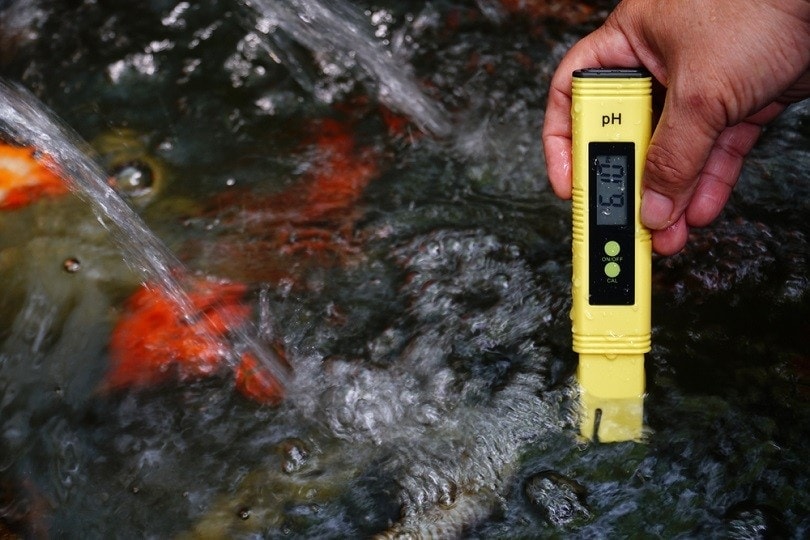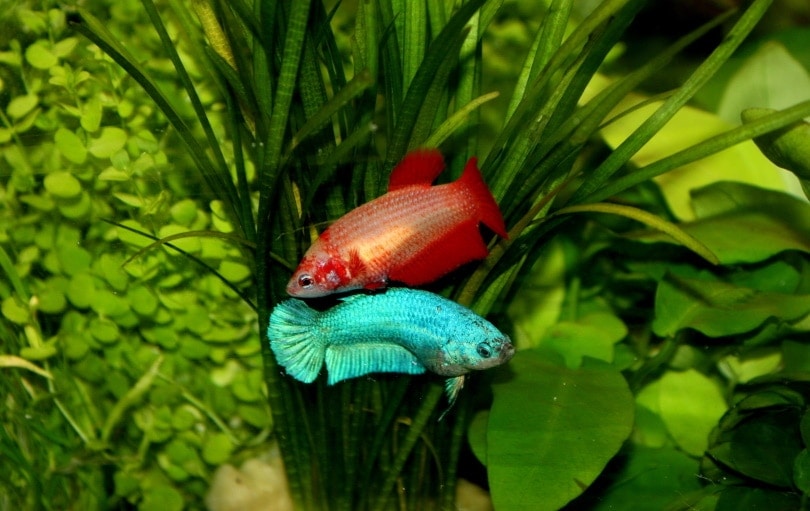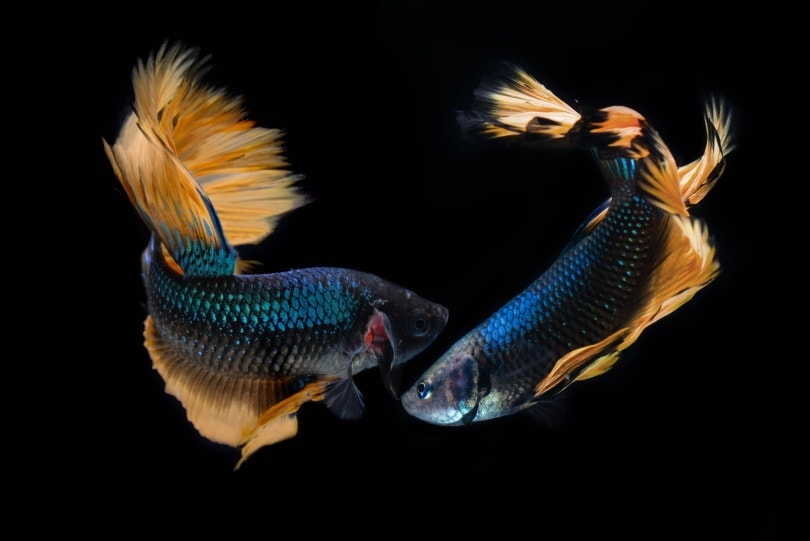Halfmoon Betta: Care Guide, Pictures, Lifespan & More

Updated on
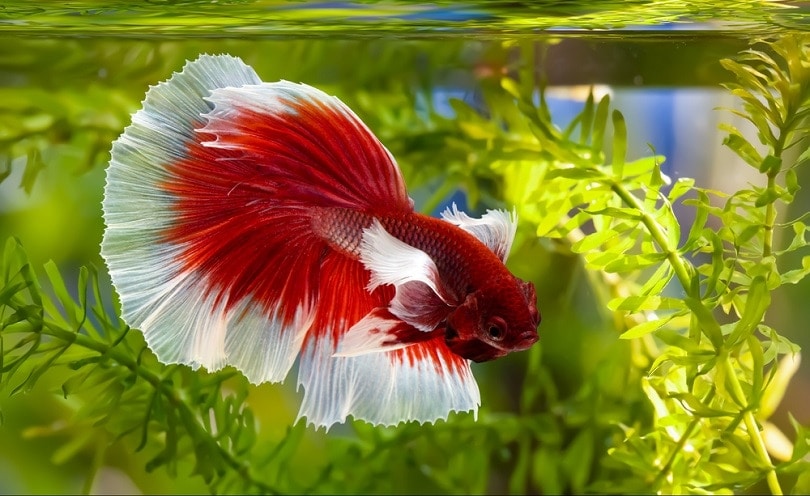
Click to Skip Ahead
The Halfmoon Betta is one of the most popular types of Betta fish that you can buy. It gets its name from its plentiful fins that fan out to 180 degrees. It’s available in all colors and patterns, including the popular Samurai and Mustard Gas. There are two main tail types, and they require some special care compared to other Betta fish. If you would like to learn more about these fascinating fish, keep reading while we look at the cost of these fish as well as behavior, appearance, habitat, and more to help you make an informed decision about if it’s right for your home.
Quick Facts about Halfmoon Betta
| Species Name: | Macropodusinae |
| Family: | Osphronemidae |
| Care Level: | Beginner |
| Temperature: | 76–81 degrees |
| Temperament: | Active, hungry, solitary |
| Color Form: | Black,red, blue, clear, purple |
| Lifespan: | 2–4 years |
| Size: | 1–3 inches |
| Diet: | Flakes, pellets, brine shrimp |
| Minimum Tank Size: | 5 gallons |
| Tank Set-Up: | Optional live plants |
| Compatibility: | Rare |
Halfmoon Betta Overview
Many owners call their Halfmoon Betta a Siamese fighting fish. It’s notable for its large fins but is otherwise extremely similar to other betta fish. It has the unique ability to breathe by taking gulps of air off the surface, which allows them to survive in low oxygen environments. You won’t need to provide aeration to keep them alive, which is why you often see them in plant vase aquariums, though they will be much happier in a larger environment.
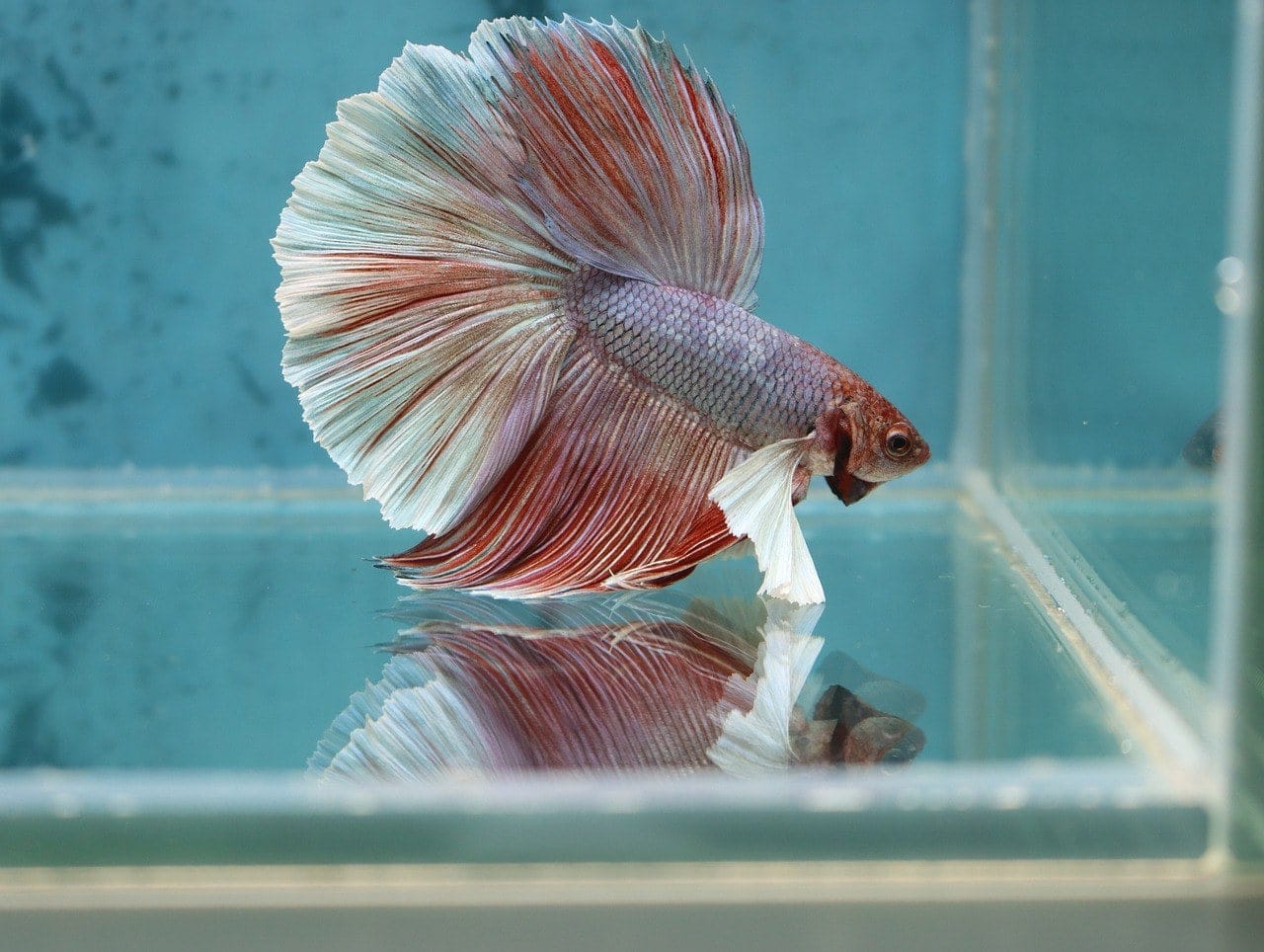
How Much Do Halfmoon Bettas Cost?
You can expect to pay between $5 and $60 for your Halfmoon Betta, depending on where you live and where you purchase from. Fish tend to be more expensive in urban areas where demand can drive up the cost. Besides the fish, you will need to purchase an aquarium and some food, but you will not need to spend much beyond that.
Typical Behavior & Temperament
Since your Halfmoon Betta is also called a Siamese fighting fish, you should have some idea about its temperament. These fish are extremely protective of their territory and will become aggressive towards many different kinds of fish, resulting in the quick death of one or both fish. It can even feel threatened when you are looking into the tank. You will often see it fan out its fins to look more intimidating and can even puff out its gills and chin if you get too close. If you want to place other animals into the tank, you will need to make sure they can cohabitate. Snails and pleco (suckerfish) are great choices.

Appearance & Varieties
The Halfmoon Betta fish has large fins that expand when it is threatened or showing off to cover a full 180 degrees resembling a half-moon, which is where it gets its name. Like other varieties, it can vary considerably in size, ranging from 1–3 inches. They can have extremely bright colors with deep reds and blues that will add plenty of color to any aquarium. Like all other varieties, the Halfmoon Bettas are sexually dimorphic, and only the males have the large colorful fins, while the females are even more aggressive.
Other varieties are very similar to the Halfmoon Betta and mostly describe the fish’s fin shape and color pattern. Examples of different varieties include the Blue Betta, Red Betta, White Betta, Veiltail, Crown Tail, and Rose Tail.
How to Take Care of the Halfmoon Betta
Habitat, Tank Conditions & Setup
Aquarium Size
Some experts suggest a tank size as small as ¼ gallon is suitable for your Halfmoon Betta, while others recommend a minimum of five gallons. We keep ours in 10-gallon tanks and can tell you they use the entire tank, so we recommend a minimum of five gallons. Larger tanks also hold their temperature better than small tanks, so there is less risk of shock, and you will need to clean the smaller tanks much more frequently, which is tedious and can also shock the fish.

Plants
We recommend live or plastic plants for your Betta fish because it likes to hide by them, and it will especially like large leaves like those of the aquarium banana plant. However, since the Halfmoon Betta breathes air from the surface, there is no benefit to living plants over plastic ones.
Lighting
We recommend fluorescent lighting or LED lights for your aquarium because they will not heat the water as a halogen light would. LED lighting systems are becoming more popular and work fine, but most older aquariums will have fluorescent lights. The main thing is to keep a regular day-night cycle to promote good health. Many people use a timer, so the cycle remains consistent even if they are away.
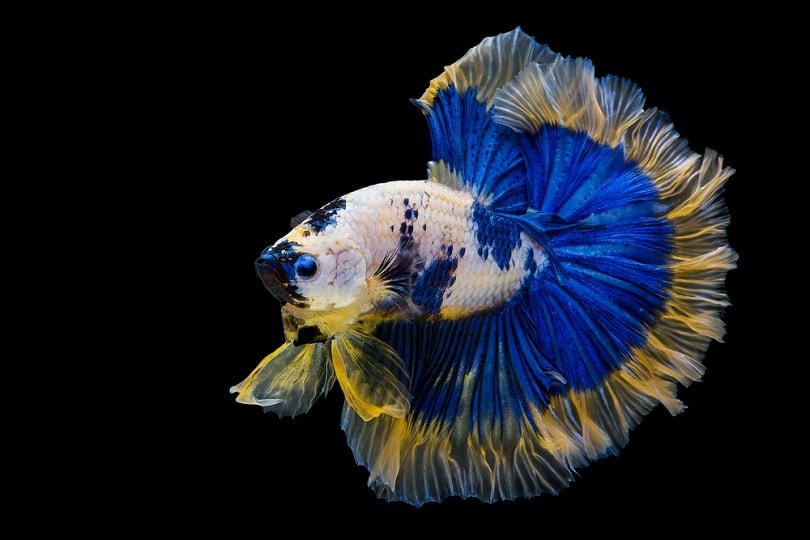
Are Halfmoon Bettas Good Tank Mates?
As we mentioned earlier, your Halfmoon Betta will not make a good tank mate for many fish species. However, that doesn’t mean it needs to stay in the tank alone. Besides the pleco and the snail, you can add ghost shrimp, feeder guppies, harlequin rasbora, tetras, and more.
What to Feed Your Halfmoon Betta
Several commercial flake and pellet foods are suitable for your Halfmoon Betta, and you can also feed it live brine shrimp to activate its hunting instincts and provide mental stimulation. Betta fish prefer to eat smaller meals throughout the day, but you can also feed them twice a day by giving them all the food they will consume over a 5-minute session.
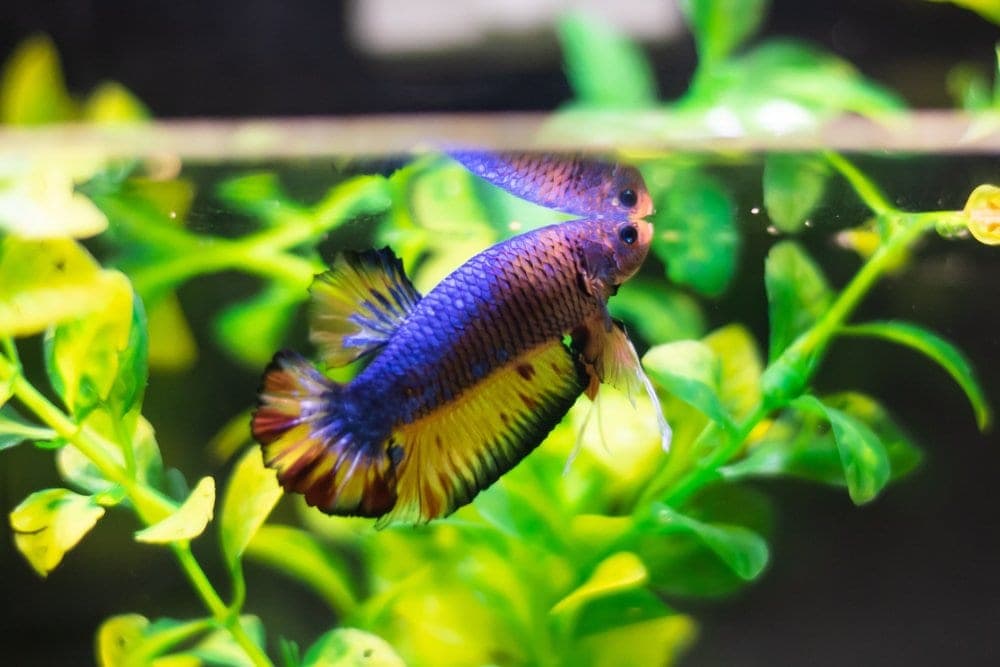
Keeping Your Halfmoon Betta Healthy
Keeping your Halfmoon Betta healthy is not difficult as long as you keep the water temperature in the range of 76–81 degrees Fahrenheit. The Halfmoon Betta is extremely hardy and can live quite a long time, even in little water.
Breeding
To breed Halfmoon Betta fish, you will need to select a healthy male and female between four and twelve months old.
- Choose one with colors you like, and the female should be slightly smaller than the male.
- Keep your fish on a high-protein diet before breeding begins.
- Place the fish in a tank with three to five inches of water to encourage the fish to get acquainted.
- Keep the filter as gentle as possible to prevent stirring up the water.
- Do not put any substrate in the tank, but you can put something that floats, like Styrofoam or leaves that the male can attach the bubble nest.
- You can use a plexiglass divider to separate the fish while allowing them to see each other at first. It would be best if you also had plastic plants in the aquarium that the female can hide behind if the male gets aggressive during the breeding.
- If the male is interested in the female, he will start bumping the divider and will get darker in color, while the female will develop vertical stripes to show interest, and she will also get darker. She will also point her tail in the direction of the male.
- Once you see the colors darken, the male should begin building his bubble nest, and you can remove the divider, but you will need to watch closely to make sure no conflicts develop.
- If the male gets violent or the female destroys the bubble nest, you will need to separate the fish and start again.
- While mating, the male will turn the female upside down and fertilize the eggs as she releases them.
- Once the mating is complete, you can remove the female, and the male will tend the nest for about four days until the fish begin to swim.
- Once the fish can swim, it’s time to remove the male, or it will become aggressive, and your breeding process is complete.
Is The Halfmoon Betta Suitable for Your Aquarium?
Yes. If you are looking for an attractive fish that is active and fun to watch, we highly recommend giving a Halfmoon Betta a try in your aquarium. It’s easy to maintain and is suitable for beginners and children. It has a long lifespan, and the only downside is that it doesn’t cohabitate with other fish too well. While there are other fish, you can put into the tank. You’ll need to research every kind you are considering to make sure there aren’t any problems.
We hope you have enjoyed reading over this guide, and it has helped answer your questions. If we have convinced you to get one of these fish for your tank, please share this guide to the Halfmoon Betta on Facebook and Twitter.
Featured Image Credit: panpilai paipa, Shutterstock




